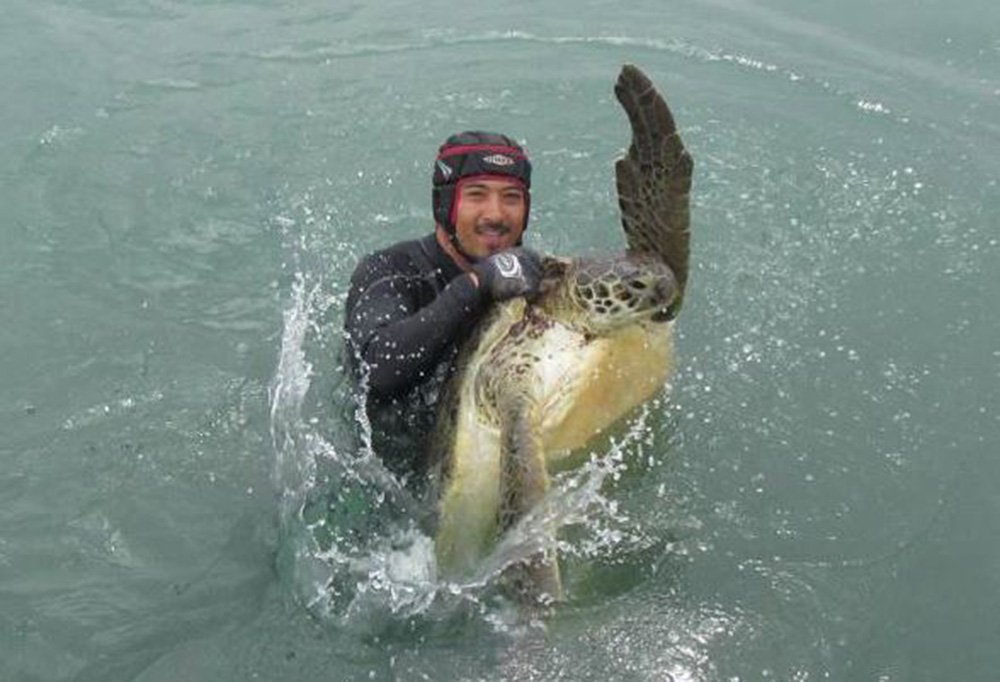Sea turtle orientation mystery revealed

SEA TURTLES MIGHT use the Sun – not just magnetic fields, as originally thought – to orient themselves in unfamiliar waters, a new study has found. Researchers from James Cook University in Queensland discovered this phenomenon after tracking the movements of 22 green turtles that had been displaced from their home range.
The scientists captured and tagged the turtles in eastern Australia, and then transported them several kilometres from their usual hangout. They tracked the turtles’ movements via GPS as they migrated back home – and noticed an unexpected pattern.
“We found that turtles generally alternate between moving during the day, and staying stationary at night,” said lead researcher, Dr Takahiro Shimada. “After the stationary period, there is a large directional correction that occurs early in the morning.”
It is this early morning course adjustment that suggests the turtles may be using the Sun. “The turtles might use the rising Sun to figure out where true east is, and to recalibrate their internal compass,” said Takahiro.
This is the first study to show that sea turtles orient themselves at a specific time of day. Such detailed insight was made possible by the use of improved GPS technology, which rapidly captures data every time the turtle comes up to the surface.

Researcher Dr Takahiro Shimada during capture and release operations with turtles. (Image courtesy James Cook University)
Long distance voyagers
Sea turtles are renowned for their ability to navigate vast distances across the ocean, and scientists are eager to figure out the secrets of this exceptional ability. “We have known for a long time that turtles can travel thousands of kilometres to small targets, either breeding areas or foraging sites,” said marine scientist Professor Graeme Hays from Deakin University, who was not involved in the research. “This is a nice study that adds another piece in the jigsaw of understanding how sea turtles migrate long distances.”
Scientists have long known that sea turtles can detect the Earth’s magnetic field, which gives them an idea of where they are in the ocean – a ‘map sense’. But researchers are still figuring out exactly how sea turtles can find their way back to very specific locations, such as the beach where they hatched.
A multitude of clues
Recent research suggests that sea turtles may detect the unique geomagnetic signature of their home coastline – but they likely have a suite of wayfinding capabilities. “We looked at relatively short-distance migration, because magnetic fields do not seem to be as important on these fine scales [compared to longer trips],” explained Takahiro. In addition to geomagnetic fields, sea turtles may clue into visual signs or chemical signals carried by currents to make their way home.
This study pointed to the possibility of turtles using a sun compass – like many birds do – but there are other explanations, according to Graeme. “We see the turtles wake up, have a ponder and go ‘hmm that’s about the right direction.’ But this decision at dawn could be based on a host of other cues, including geomagnetic cues.”
Takahiro said he agrees further investigation is needed. “We are cautious to say that the Sun is directly involved, but this research indicates the possibility. The next step will be laboratory experiments so we can control all the variables, and we can test whether it’s definitely the sunrise.”
The research is published in the Journal of Experimental Marine Biology and Ecology.
READ MORE:
- Light pollution is confusing baby sea turtles
- Flatback turtle migration routes mapped
- Rare turtles caught on film for the first time




